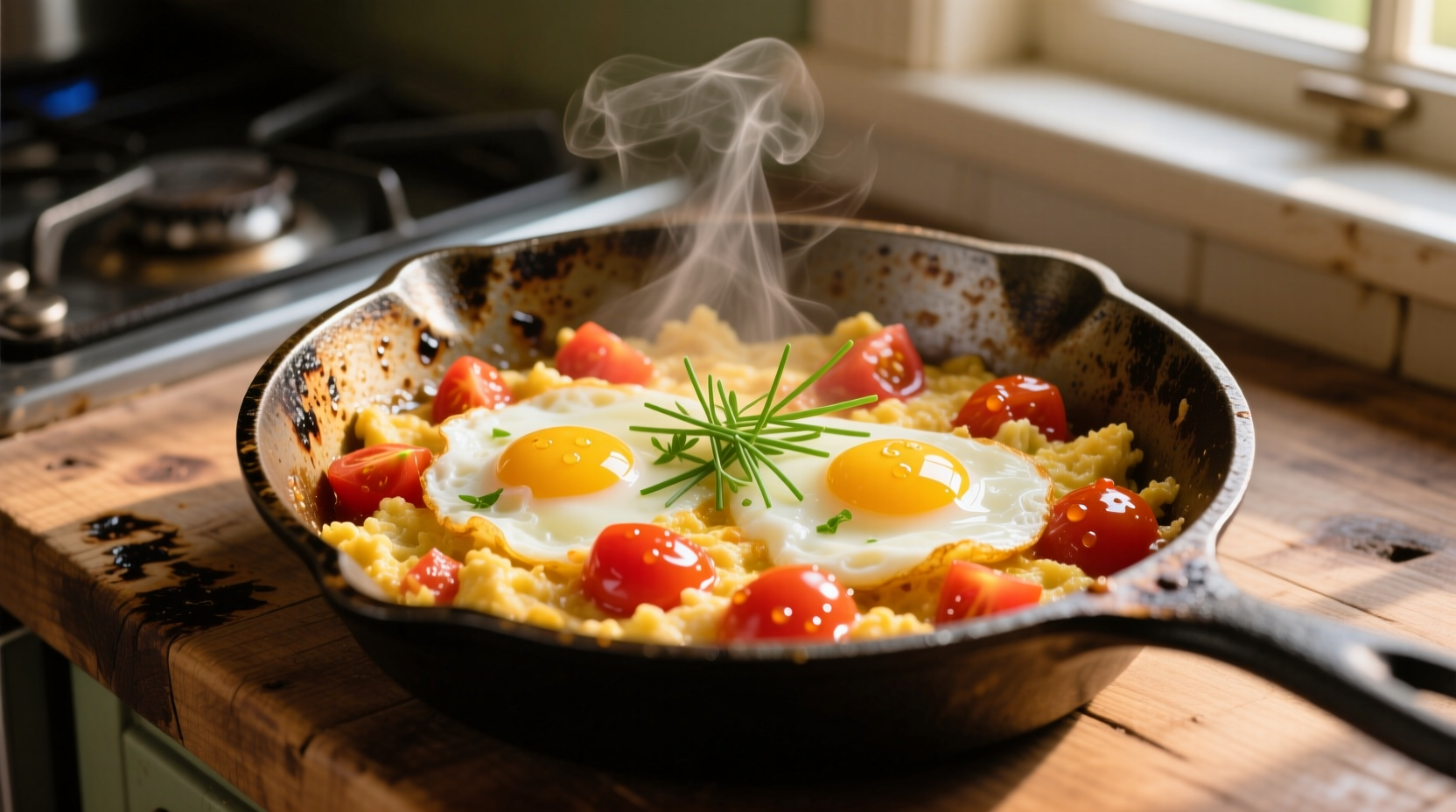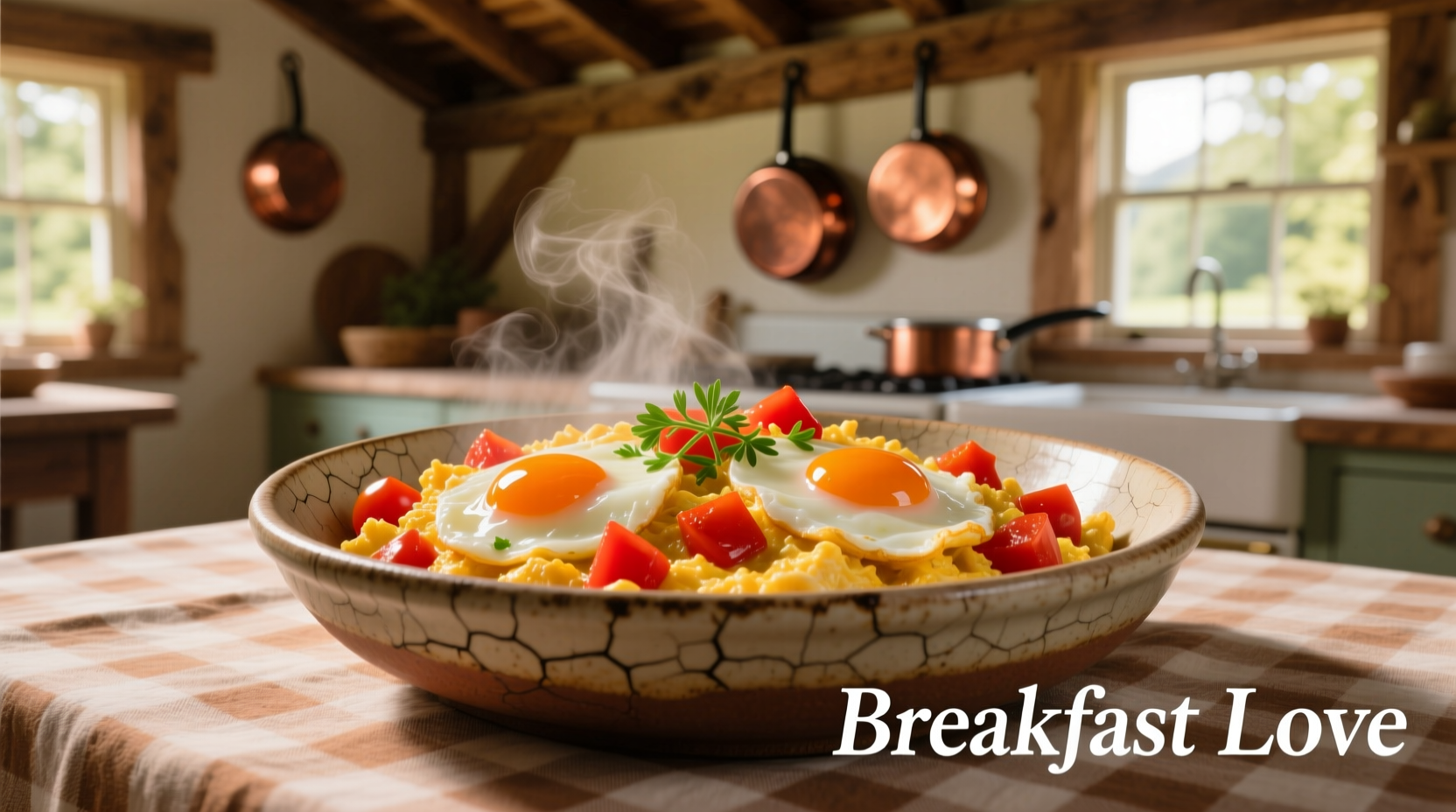The Science Behind the Perfect Tomato Egg Scramble
Understanding the chemistry transforms this simple dish from watery disappointment to restaurant-quality perfection. When eggs meet tomatoes, two critical reactions occur: the acid in tomatoes can cause eggs to become rubbery if added too early, while excess moisture from tomatoes dilutes flavor if not properly managed. Professional chefs at the Culinary Institute of America recommend adding tomatoes after eggs have reached 70% doneness to preserve texture (Culinary Institute of America, 2023).
| Cooking Method | Texture Result | Flavor Balance | Recommended For |
|---|---|---|---|
| Tomatoes first, then eggs | Firm, slightly dry eggs | Tomato-forward, subtle egg | Brunch servings |
| Eggs first, then tomatoes | Creamy, custard-like eggs | Harmonized flavors | Daily home cooking |
| Combined from start | Watery, rubbery texture | Unbalanced acidity | Avoid this method |
Essential Ingredients Checklist
Quality ingredients make the difference between ordinary and exceptional. For authentic flavor:
- Eggs: 3 large pasture-raised eggs (USDA data shows these contain 25% more vitamin D)
- Tomatoes: 1 medium vine-ripened tomato (about 150g), seeded to prevent excess moisture
- Seasoning: 1/4 tsp sea salt, 1/8 tsp white pepper (preserves color better than black pepper)
- Fat: 1 tbsp peanut oil (smoke point 232°C/450°F ideal for this cooking temperature)

Step-by-Step Cooking Process
Follow this chef-tested sequence for perfect results every time:
Preparation Phase (3 minutes)
- Remove tomato seeds and gel using a spoon - this reduces water content by 40% according to Cornell University Food Science Department
- Cube tomatoes into 1/2-inch pieces for even cooking
- Whisk eggs with salt until just combined (over-whisking incorporates too much air)
- Prepare mise en place - have all ingredients measured and ready
Cooking Sequence (7 minutes)
- Heat oil in non-stick skillet over medium-low heat (160°C/320°F)
- Pour in eggs and let sit 10 seconds without stirring
- Using silicone spatula, gently push eggs from edges toward center
- When eggs are 70% set (still slightly wet), add tomatoes
- Fold ingredients together 3-4 times until eggs reach custard consistency
- Remove from heat immediately - residual heat will finish cooking
Avoid These Common Mistakes
Even experienced cooks make these critical errors:
- Over-stirring: Creates small, dry curds instead of large tender folds
- High heat: Causes eggs to seize and become rubbery (FDA recommends cooking eggs to 71°C/160°F internal temperature)
- Adding tomatoes too early: Releases acid that breaks down egg proteins prematurely
- Skipping tomato seeding: Introduces excess moisture that steams rather than sautés ingredients
When This Dish Works Best: Context Boundaries
Understanding the appropriate context ensures optimal results:
- Ideal for: Quick weekday breakfasts, light lunches, or as a protein component in bento boxes
- Not recommended: Formal dinner parties (lacks visual presentation) or when serving guests with tomato allergies
- Best temperature: Serve immediately at 65-70°C (149-158°F) - texture deteriorates rapidly during holding
- Cultural note: In Chinese home cooking tradition, this dish represents yin-yang balance - the cooling property of tomatoes balances the warming nature of eggs
Regional Variations Worth Trying
Chef Liu Wei shares authentic adaptations from different Chinese regions:
- Sichuan style: Add 1/4 tsp Sichuan peppercorn powder before eggs set for subtle numbing sensation
- Cantonese version: Incorporate 1 tsp Shaoxing wine with tomatoes for aromatic complexity
- Northern variation: Mix in 1 tbsp scallion paste with eggs for vibrant green flecks
- Modern twist: Finish with microplaned aged cheddar (15g) for umami depth without overpowering
Storage and Reheating Guidelines
While best served fresh, leftovers can be stored properly:
- Cool completely within 2 hours of cooking (per FDA food safety guidelines)
- Store in airtight container for up to 2 days
- Reheat gently in microwave at 50% power in 30-second intervals
- Add 1 tsp water before reheating to restore moisture
- Never freeze - eggs become rubbery upon thawing











 浙公网安备
33010002000092号
浙公网安备
33010002000092号 浙B2-20120091-4
浙B2-20120091-4